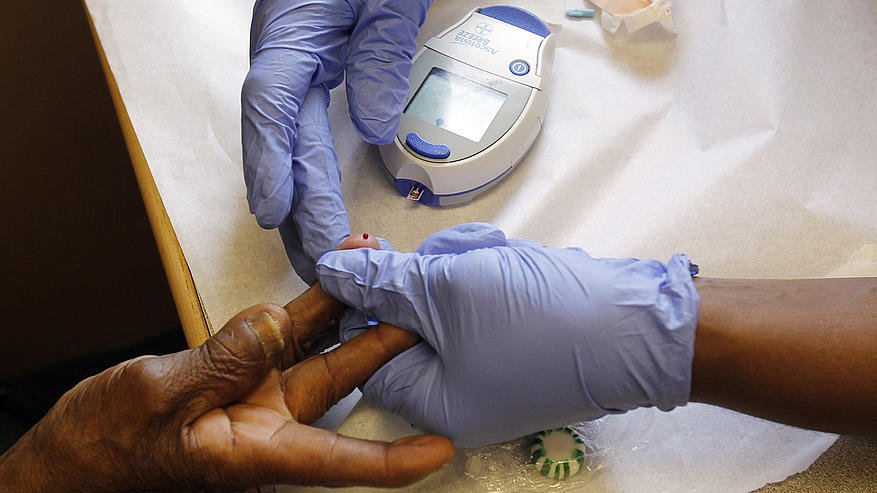For some time, doctors and neuroscientists have suggested that people with diabetes are more likely to develop neurodegenerative diseases than non-diabetic individuals, but were unable to prove their hypothesis. Now Israeli scientists at Israel’s Ben Gurion University in the Negev have found a definite link between Type II diabetes and the propensity for developing Parkinson’s disease.
Over a period of three years, Dr. Yifat Miller and her post-doctoral student Yoav Atsmon-Raz attempted to explain how Type II diabetes, also known as late onset diabetes, could affect the body in a way that would make it more susceptible to developing neurodegenerative disease. While things like stroke, heart attack, blindness and kidney disease are known complications associated with Type II diabetes, it has yet to be confirmed that insulin deficiency scientifically raises the risk of contracting neurodegenerative disease. Now Miller’s breakthrough discovery may once and for all make sense of the deadly link between diabetes and neurodegenerative diseases.
The ‘clumping’ connection
The key component to discovering the missing link between the diseases was a new observation, made by Miller and Atsmon-Raz, regarding Parkinson’s disease. Examining the atomic structure of the brain protein fragment non-amyloid beta component (NAC), the team discovered for the first time that Parkinson’s disease is triggered when NAC clumps together. With knowledge that similar clumping action caused by a hormone called amylin triggers Type II diabetes in the pancreas, Miller’s team set out to find the clumping connection.
SEE ALSO: Three Israeli Researchers Who Made It Their Life Goal To Beat Parkinson’s Disease
Basing their research on previous studies that showed amylin is also found in the brain and is related to Alzheimer’s disease when it clumps together, Miller discovered that this same hormone could cause Parkinson’s in patients with diabetes. “Our findings led us to the hypothesis that if amylin is located in the brain it can also interact with other proteins and peptides in the brain,” Miller tells ISRAEL21c.
From here, Miller and her team observed how NAC, which is part of a protein called alpha-synuclein, led to the death of neurons at an atomic level. By mapping the atomic structure of NAC and showing how it aggregates itself throughout the brain, Miller revealed for the first time the clumping mechanism in the brain that leads to Parkinson’s disease. All that was left was for her and her team to show that the presence of amylin in the brain and pancreas, and its clumping habits, could be the explanation for why Type II diabetics are at higher risk of contracting neurodegenerative diseases.
Sign up for our free weekly newsletter
SubscribeThe first step on the road to an effective Parkinson’s treatment?
Using sophisticated computer simulations to examine how NAC interacts with amylin in the brain, Miller was able to support her conclusion that the synergy between these elements is what explains the higher neurodegenerative risk for diabetes patients. “We propose that NAC and amylin aggregate together and kill neuron cells, and these aggregates lead to Parkinson’s disease,” says Miller, clarifying that its NAC and amylin taken together that increase the risk of developing the disease.
Miller’s findings on the NAC-amylin interaction were confirmed in experiments, and she hopes that they will be used by other researchers to produce more effective Parkinson’s medication. “Publishing our results will allow other scientists to use this information to learn more about Parkinson’s, its mechanisms and possible drugs to reduce aggregation. Now one could develop a drug to prevent this interaction so the risk of diabetes will not lead to the risk of Parkinson’s,” says Miller.
SEE ALSO: ‘Sweet’ Success For Israeli Researchers In The Treatment And Early Detection Of Diabetes
Though the research conducted by Miller and her laboratory has yet to be published, it is some of the first to effectively examine the mechanism that causes Parkinson’s disease, a novel endeavor that has won her grants from the European Union Seventh Framework Programme, among other scientific bodies. While it is still unclear what about diabetes, besides the presence of the amylin hormone, triggers a higher risk for Parkinson’s disease, Miller and her team are well on their way to finding out.
Photos: Image Editor/ Dani Machlis, BGU/ Open Knowledge
Related posts

Israeli Medical Technologies That Could Change The World

Harnessing Our Own Bodies For Side Effect-Free Weight Loss

Missing Protein Could Unlock Treatment For Aggressive Lung Cancer






Facebook comments